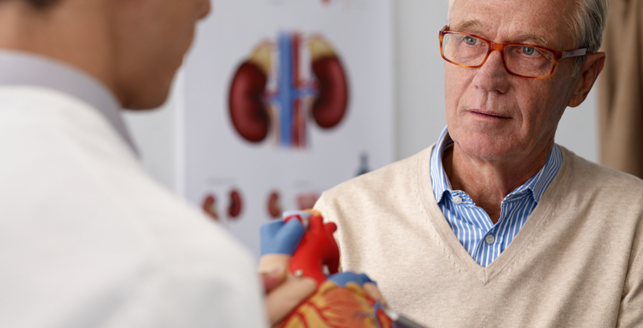Type 2 Diabetes Mellitus Patients are at Increased Risk of Cardiovascular Disease
The future of CVD risk assessment may be more personalised and actionable
Diabetes is a metabolic disorder identified by the presence of hyperglycaemia (high levels of sugar in the blood)1. While there are several types of diabetes, Type 2 Diabetes Mellitus (T2DM) accounts for 90% of diabetes cases2.
Many of the risk factors for developing T2DM are also risk factors for Cardiovascular Disease (CVD)3. Some of these risk factors are non-modifiable (such as age, race, and genetic disposition) and some are what we call modifiable risk factors (such as smoking, obesity, hypertension, and lack of exercise) that can be modified to reduce a patient's risk4.
T2DM patients are automatically in the “high CVD risk” category5. Heart failure and peripheral arterial disease are the most common initial cardiovascular diseases in T2DM patients6. Heart failure is approximately 2–8 times more prevalent in people with T2DM, and the incidence increases dramatically with age - in fact risk doubles with every decade of age7.
Currently, several clinical factors are utilised by Australian GPs for assessing CVD risk: blood pressure, smoking status, cholesterol, diabetes status, chronic kidney disease, family history of CVD, and alcohol intake8. While these factors may be practical to use, there is the opportunity to further individualise heart failure risk beyond the presence of accepted clinical risk factors to provide additional reassurance to the treating Physicians9.
In future, biomarkers may have an increasingly prominent role to play in providing this individualised risk assessment. By providing insights into an individual patient’s underlying condition, biomarkers can deliver a more accurate appraisal of a particular patient's individualised risk of worsening outcomes or hospitalisation10.
This more personalised risk assessment may enable Physicians to identify those patients who will respond more effectively to therapeutic medications or more intensive treatment, potentially improving the chances of an improved outcome for the patient11.
Benjamin Smith
Cardiology Disease Area Lead
Roche Diagnostics Australia Pty Ltd
References
World Health Organization. “Classification of diabetes mellitus.” Geneva, World Health Organization, https://www.who.int/publications/i/item/classification-of-diabetes-mellitus. Accessed 30 June 2021.
Zheng, Y. et al “Global aetiology and epidemiology of type 2 diabetes mellitus and its complications.” Nature Reviews: Endocrinology, vol. 14, Feb 2018, pp. 88-98, https://pubmed.ncbi.nlm.nih.gov/29219149/.
De Rosa S, et al (2018) Type 2 Diabetes Mellitus and Cardiovascular Disease: Genetic and Epigenetic Links. Front. Endocrinol. 9:2. doi: 10.3389/fendo.2018.00002
National Vascular Disease Prevention Alliance. Guidelines for the management of absolute cardiovascular disease risk. 2012.
European Heart Network. “Cardiovascular Risk Assessment.” Position Paper, vol. 1, no. 1, 2014, pp. 1-7.
Shah, Anoop D. et al “Type 2 diabetes and incidence of cardiovascular diseases: a cohort study in 1·9 million people.” Lancet Diabetes Endocrinology, vol. 3, 2015, pp. 105-113.
Nichols, Gregory A. et al “Congestive Heart Failure in Type 2 Diabetes.” Diabetes Care, vol. 24, no. 9, 2001, pp. 1614-1619.
Heart Foundation. “How to conduct a Heart Health Check.” Heart Health Check Toolkit, Heart Foundation, https://www.heartfoundation.org.au/bundles/heart-health-check-toolkit?selectedfilter=^1^Conducting%20heart%20health%20checks. Accessed 30 June 2021.
Mueller, Christian. Et al “Heart Failure Association of the European Society of Cardiology practical guidance on the use of natriuretic peptide concentrations.” European Journal of Heart Failure, vol. 21, no. ., 2019, pp. 715-731.
Wolsk, Emil. et al “Increases in Natriuretic Peptides Precede Heart Failure Hospitalization in Patients With a Recent Coronary Event and Type 2 Diabetes Mellitus.” Circulation, vol. 135, 2017, pp. 1560-1562.
Huelsmann, Martin. Et al “PONTIAC (NT-proBNP Selected PreventiOn of cardiac eveNts in a populaTion of dIabetic patients without A history of Cardiac disease).” Journal of the American College of Cardiology, vol. 62, no. 15, 2013, pp. 1365-1372.
